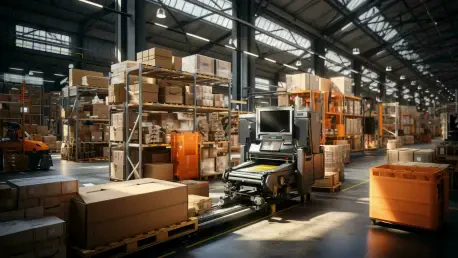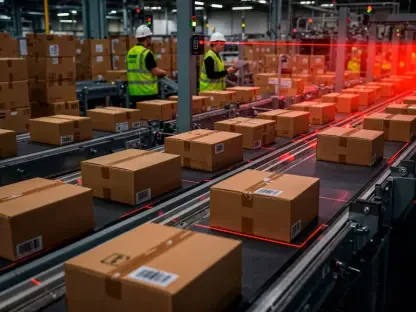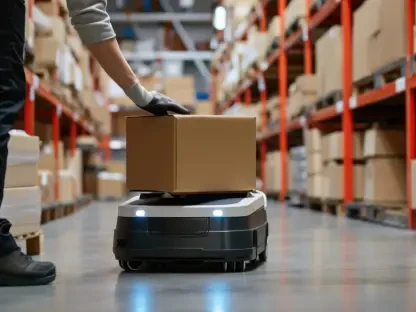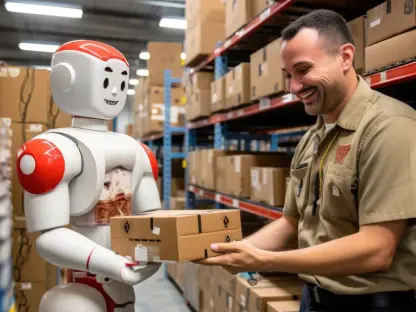As we dive into the evolving world of warehouse automation, I’m thrilled to sit down with Rohit Laila, a seasoned veteran with decades of experience in the logistics industry. Spanning supply chain management and delivery solutions, Rohit has witnessed firsthand the transformative power of technology and innovation in this space. Today, we’ll explore the recent merger of a prominent U.S. warehouse automation specialist with a global leader, delving into the implications for the industry, the benefits for customers, and the future of automation in North America. Our conversation touches on tailored solutions, strategic expansions, and the growing importance of cutting-edge systems in material handling.
Can you give us a broad picture of what this U.S.-based warehouse automation specialist brings to the table in terms of expertise and focus?
Absolutely. This company has carved out a strong niche as a system integrator and software specialist in warehouse automation. They’re known for delivering customized solutions that cover everything from consulting and design to project execution and after-sales support. Their proprietary software, which manages warehouse operations, is a key part of their offering, helping clients streamline processes and boost efficiency.
How long has this company been shaping the warehouse automation landscape, and what’s been their core mission since day one?
They’ve been at it since 2007, so over 15 years now. From the start, their mission has been to provide tailored automation solutions that really fit the unique needs of each client. They’ve focused on integrating advanced technology with hands-on expertise to optimize order fulfillment and warehouse management for businesses across the U.S.
What sets their Warehouse Execution System apart, and how does it impact their clients’ operations?
Their Warehouse Execution System, or WES, is a standout because it acts as the brain of warehouse operations, coordinating everything from inventory tracking to order processing in real time. It’s designed to be flexible, so it can adapt to different setups and needs. For clients, this means faster, more accurate operations and the ability to scale up without major hiccups.
Who are the typical clients this company serves in the U.S., and what do they look for in automation solutions?
They primarily work with businesses that need sophisticated warehouse design and robust automation systems—think e-commerce players, retailers, and third-party logistics providers. These clients are often looking for ways to integrate technology seamlessly, execute complex projects, and ensure reliable support after implementation to keep their operations running smoothly.
How does their team of professionals play a role in crafting solutions that truly meet client needs?
With a team of around 50 skilled folks, they bring a deep well of experience to the table. These professionals handle everything from initial simulations to on-the-ground implementation, ensuring every solution is customized. Their expertise allows them to anticipate challenges and design systems that are both practical and forward-thinking for their clients.
Shifting to the recent merger, what does joining forces with a global leader in material handling mean for this company’s trajectory?
This merger is a game-changer. It aligns them with a powerhouse in the industry, giving them access to broader resources, a larger network, and enhanced capabilities. It’s a chance to grow their reach in North America and beyond while continuing to focus on delivering top-notch automation solutions.
In what ways does this partnership enhance the value offered to customers seeking warehouse automation?
By combining their specialized know-how with the global expertise and infrastructure of their new parent company, they can offer more comprehensive and scalable solutions. Customers benefit from a wider range of technologies, faster innovation, and a stronger support system, all tailored to their specific operational needs.
There’s a lot of buzz around mobile automated storage and retrieval systems. Why are these solutions becoming so critical in today’s warehouse environment?
Mobile AS/RS systems are gaining traction because they offer incredible flexibility and efficiency. Unlike fixed systems, they can adapt to changing layouts or demand spikes, which is huge in industries like e-commerce where speed and scalability are everything. They’re at the forefront of automation because they save space, reduce labor costs, and improve accuracy.
How does this merger create new opportunities for expansion in the North American market?
It opens up significant doors by expanding their operational footprint with new locations in key areas like Atlanta, Georgia, and Erlanger, Kentucky. These hubs provide direct access to new customer segments and allow for localized, tailored integration services, strengthening their presence and responsiveness in the U.S. market.
What’s your forecast for the future of warehouse automation in North America, especially with strategic moves like this merger?
I see warehouse automation continuing to grow at a rapid pace in North America. With e-commerce booming and labor shortages persisting, companies will lean even more on technology like mobile AS/RS and advanced software to stay competitive. Strategic mergers like this one will likely accelerate innovation, drive down costs, and make automation accessible to a broader range of businesses, shaping a more efficient and dynamic logistics landscape.








